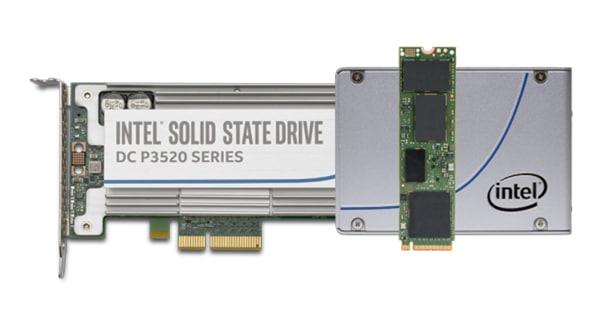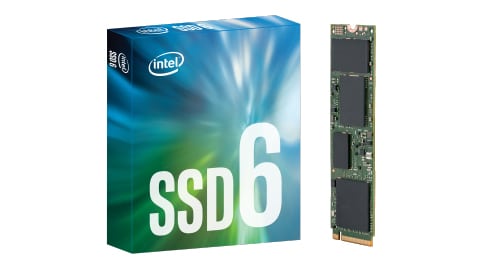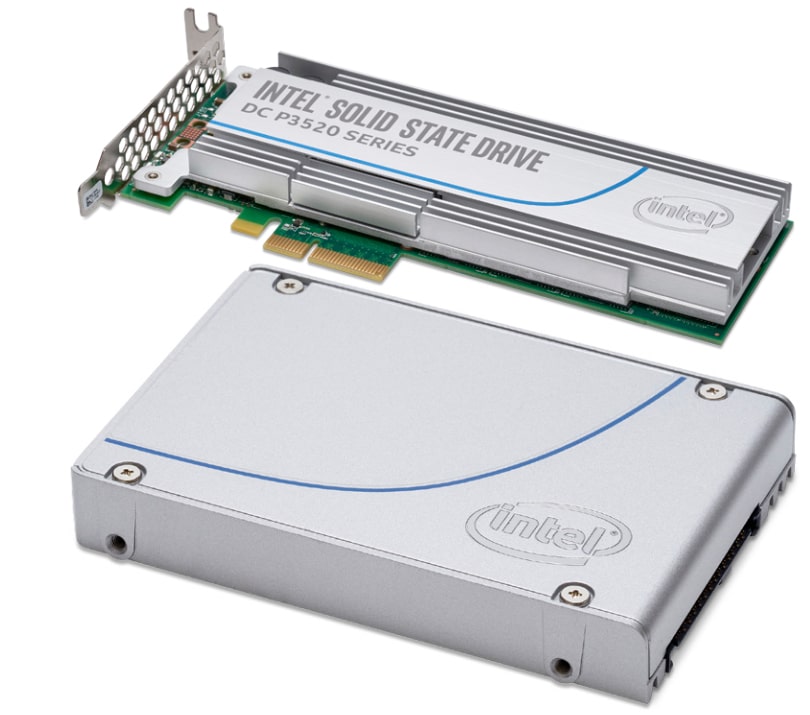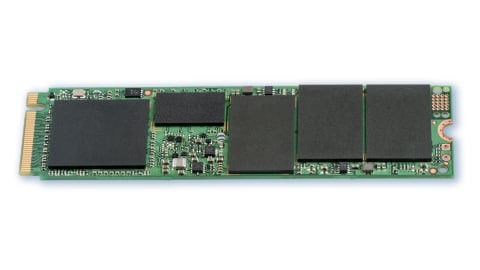Today Intel unveiled six new 3D NAND SSDs. These new SSDs are designed to hit various aspects of the industry from client to data center to drive designed specifically to handle the Internet of Things (IoT). These drives are the first SSDs from Intel to utilize 3D NAND.

Intel’s new SSD families are all based off of its 3D TLC NAND. Intel states that its 3D NAND, combined with PCIe, helps push the limits of both performance and value. Intel is offering drives that can cover most use cases in a variety of form factors and interfaces to adapt to customers specific needs and use cases.

The client SSDs being introduced are the Intel SSD 600p Series, an M.2 NVMe drive aimed at consumer notebooks and desktops. For Business client use, Intel is introducing the Intel SSD Pro 6000p Series. This SSD is an M.2 NVMe drive as well aimed at business notebooks and desktops with advanced data security and remote manageability capability.
Key specifications:
- Form factor: M.2
- Interface: PCIe Gen 3×4, NVMe
- Capacities: 128GB, 256GB, 512GB, and 1,024GB
- MTBF: 1.6 M hours
- Bandwidth (up to):
- Sequential Read: 1,800MB/s
- Sequential Write: 560MB/s
- Random Read: 155K IOPS
- Random Write: 128K IOPS

For the data center, Intel is offering two different SSDs: the Intel SSD DC P3520 Series an NVMe drive geared toward performance and the Intel SSD DC S3520 Series that is aimed for data centers transitioning from SATA HDDs to SATA SSDs. The Intel SSD DC P3520 Series come in both HHHL AIC and U.2 form factors and run in capacity from 450GB to 2TB. And the Intel SSD DC S3520 Series comes in a 2.5” and M.2 form factors with capacity ranging from 150GB to 1.6TB.
Key specifications:
- SSD DC P3520
- Form factor: HHHL AIC, U.2
- Interface: PCIe Gen 3×4, NVMe,
- Capacities: 450GB (U.2 only), 1.2TB, 2TB
- Bandwidth (up to):
- 450GB
- Random 4K Read: 145K IOPS
- Random 4K Write: 19K IOPS
- Random 4K 70/30 R/W: 50K IOPS
- Sequential Read: 1,200MB/s
- Sequential Write: 600MB/s
- 1.2TB
- Random 4K Read: 320K IOPS
- Random 4K Write: 26K IOPS
- Random 4K 70/30 R/W: 80K IOPS
- Sequential Read: 1,700MB/s
- Sequential Write: 1,300MB/s
- 2TB
- Random 4K Read: 375K IOPS
- Random 4K Write: 26K IOPS
- Random 4K 70/30 R/W: 85K IOPS
- Sequential Read: 1,700MB/s
- Sequential Write: 1,350MB/s
- 450GB

Intel is also release SSDs designed specifically for the unique challenges of IoT. For point-of-sale and digital signage, Intel is introducing the Intel SSD E 6000p Series. This M.2 NVMe drive offers high performance as well as security features such as remote secure erase and AES 256-bit encryption. Intel is also offering the Intel SSD E 5420s Series for upgrading SATA HDDs to SSDs for use in IoT applications.
Intel SSD E 6000p Series key specifications:
- Form Factor: M.2
- Interface: PCIe Gen 3×4, NVMe
- Capacities: 128GB, 256GB single sided
- MTBF: 1.6 M hours
- Bandwidth (up to):
- 128GB
- Sequential Read: 770MB/s
- Sequential Write: 450MB/s
- Random Read: 35K IOPS
- Random Write: 91.5K IOPS
- 256GB
- Sequential Read: 1,570MB/s
- Sequential Write: 540MB/s
- Random Read: 71K IOPS
- Random Write: 112K IOPS
- 128GB




 Amazon
Amazon